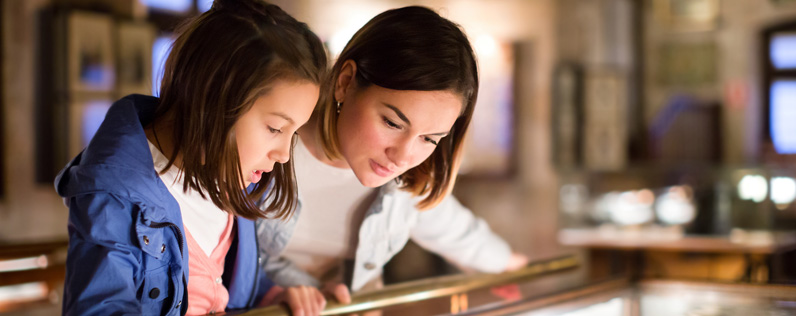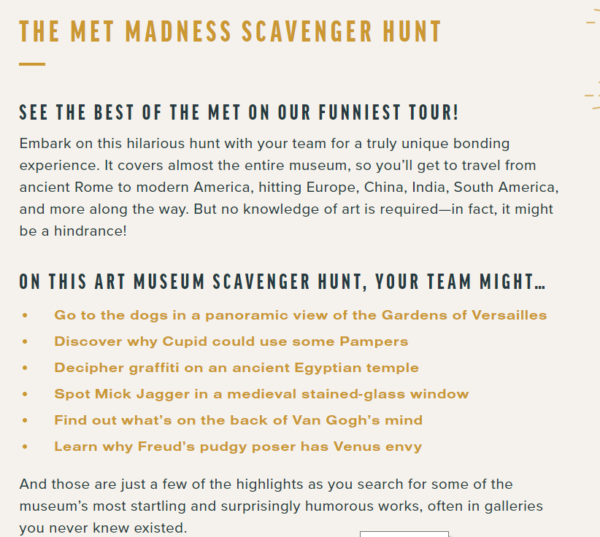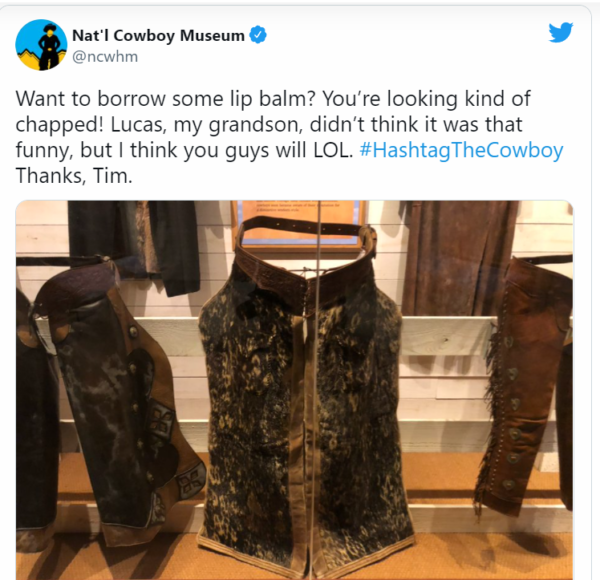
A museum is like a living, breathing book. Step inside, and you’re instantly transported into another world. Whether it’s an art museum that lets you observe great works from local artists or a historical museum that lets you walk through rooms from a bygone era, a museum simultaneously educates and inspires. But have you ever found yourself wondering how to start a museum? In this guide, we’ll walk you through each step of the process.
Why start a small-town museum?
If you’re passionate about a topic, starting a small-town museum can be a great way to explore that passion, educate others in your community, and make money at the same time.
And if you’re wondering how to start a small-town museum, keep in mind that these are a particularly special subset of museums. They can bolster the local economy, providing a new attraction that can bring in tourism revenue. At the same time, local museums provide a place for families to go together to learn and an opportunity for young people to get real-world experience with a topic.
How to start a museum
Starting a museum sounds like a big task, but if you break it down into actionable steps, it becomes much less overwhelming. Here’s what you need to do.
Step 1: Choose a niche
Before you can investigate how to start a museum, you should first determine the kind you want to start.
The answer to this may be obvious. If, for example, you recently came across a historical building that you want to renovate into a historical house museum, then you already have your answer. But if you’re just looking to bring culture and tourism to your town, you may not have a specific type of museum in mind. So, before you do anything else, you need to decide what kind of museum you want to run.
There are almost as many types of museums as there are subjects in the world. You could, for example, start a museum on video games or boats. But there are also tried-and-true models that you could follow. Examples include:
- Art museums — where pieces of art are displayed to be viewed
- History museums — where historical artifacts are displayed
- Living history museums — where actors perform skits about historic events
- Science museums — where people can learn about science, interact with tools, and participate in small experiments
- Children’s museums — where children can touch, explore, and climb while learning about topics like science and history
- Topical museums — where people can come to learn about a niche topic, such as trains, dinosaurs, or video games
If you’re not sure what type of museum interests you, consider hosting a community meeting where you ask members of the community — including decision-makers and possible financial backers — what type they would be most interested in and what they’d want to see for exhibits or interactions.
During this stage, collect names and contact information. When you’ve gotten further in your planning process, these are the people in your community most likely to be your first financial supporters.
Step 2: Determine your financing
Once you decide what kind of museum you want to establish, your next step is deciding how you’ll pay for your museum and its exhibits.
In an ideal world, future exhibits and acquisitions would be paid for with income generated by the museum itself. But before you get that far, you need to know how to start a museum with your current assets, including being able to pay for the initial overhead, staffing, and displays.
There are several different ways to get funding. What you qualify for will depend on many factors, including your credit score, your relationship with members of the community, the amount of personal money you’re willing to put into your project, and the type of museum you plan to run. Funding options include:
- Applying for federal grants
- Asking for donations from the community
- Contacting your state’s nonprofit department to ask about funding options
- Applying for a small business loan
- Setting up a GoFundMe or Kickstarter campaign
- Applying for corporate sponsorships
Hosting community fundraisers can also be a great way to inspire donations from the community and kick-start your museum’s finances.
Step 3: Find a location
Your location is a key component of your museum and is required for many of the documents you will need to fill out.
The type of museum you’re running may dictate its location. For example, a historical house museum can only be opened within a historical house. Pop-up or mobile museums, on the other hand, need a location that can be set up and taken down quickly.
If the type of museum you’re running doesn’t dictate its location, you’ll need to decide on the location yourself. You can either repurpose a for-sale retail building or build something new. Contact local contractors to determine the best option for your vision and budget.
Step 4: Get your documents in order
To officially establish your new business as a museum, there are several documents you will need to fill out. These include:
- Articles of incorporation. Filed with your state, this legal document requires you to have a business name, location, and overall purpose. The specific needs vary by state, but you can contact your secretary of state or attorney general’s office to learn more.
- Employer Identification Number. Obtained from the IRS, this is required for tax purposes.
- Nonprofit status. Although not all museums operate as nonprofits, most do. Work with a nonprofit attorney to determine whether your museum would qualify. Once you have nonprofit status, you can also work on receiving tax-exemptions from the IRS as well as local or state-level exemptions.
Depending on your assets and how you plan to finance your museum, you may also need loan documents, real estate documents, a mission statement, and board of director agreement forms.
Step 5: Set up your museum
With your funding in order and your location finalized, the next aspect of how to start a museum is establishing your collection. To do this, visit several museums like yours. For example, if you want to establish an art museum in your community, visit 10 to 20 art museums around the country. Take notes on things like their displays, their pricing, and anything unique they’re doing to stand out.
Then, return to your space and decide how to set your museum up for your community. Determine how many exhibits you want available on opening day and pick spaces in your location for each exhibit.
Once you have your exhibits determined, you’ll want to curate each exhibit, being sure to highlight displays in appealing, informative ways. Think about having each of your exhibits tell a story. The way you display items in the exhibit should naturally lead visitors through the space with a clear direction so that aisles don’t get bogged down. As they move, there should be a clear narrative or purpose to what they’re seeing.
Keep in mind that museums are about educating people. Ensure that each exhibit clearly explains what’s going on, providing more information than visitors will have on their own. Consider using technology — from interactive displays to audio tours — to bring your museum exhibits to the next level.
And while it was once considered acceptable to have museums where all you did was look, today’s visitors often want and expect interactive elements. These could include:
- Virtual scavenger hunts
- Photo opportunities
- Replicas of artifacts that can be touched and manipulated
- Demonstrations or shows
- Summer camps
- Classes or lessons

The more ways you can involve viewers in the exhibits, the more likely they are to visit your museum over and over again.
One way to make interactive displays go smoothly is to set up small tests within your community. For example, you could visit a local school and put on the performance, skit, or class you’re planning to incorporate into your museum. Based on feedback from that performance, as well as a visual assessment of how engaged the audience was, you can make changes as needed before finalizing your plans for the museum itself.
Step 6: Staff your museum
Your museum’s staff will be the foundation of how it works. From founding members — like curators and a board of directors — to tour guides and gift shop employees, every member of your business is critical to ensuring the operation runs smoothly and receives positive community reviews.
Some key staff members you’ll want to spend time interviewing and hiring include:
- Archivists — responsible for the collections of items and documents.
- Curators — responsible for curating specific exhibits, as well as assessing the authenticity of items.
- Docents — interact with the community, providing information about objects or displays.
- Exhibit designers — plan how items are displayed and laid out for people to view.
- Graphic designers — design everything from maps and pamphlets for your visitors to graphical displays and information centers.
- Shop managers — run the register and make sales. They’re helpful whether your museum has a full gift shop or just a small display stand.
- Security officers — protect your items and staff members. You may not need security in a children’s museum, but you’ll want the protection if you have any expensive artifacts on display.
Step 7: Advertise your museum
Marketing campaigns are critical to getting the word out about your new museum and ensuring you have an audience excited to visit the location on opening day and beyond. Digital museum marketing can be a great way to begin generating interest. Even before museum doors open, you can take pictures of exhibits and displays to generate excitement and show potential visitors what to expect.
Social media can be a great tool to keep people interested in their topic and informed about upcoming new exhibits or displays. If you plan to offer classes, Facebook and Twitter can provide you with a sounding board for these ideas and allow you to collect reservations before opening day.

Reaching out to the community can also be a good idea. For example, your state or town’s tourism departments may be happy to list your museum as a local attraction. You can also talk about your plans for your museum at town meetings and other local events, or attend festivals or fairs to hand out flyers and get the word out.
Step 8: Opening day and beyond
Answering the question “how to start a museum” doesn’t end on the day your museum opens. In fact, in many ways, museums are always being started and restarted.
Think of your museum as a continual conversation with your community. As information about your topic changes, your museum should change to reflect those changes. Ideally, a rotating door of new displays, artwork, or interactive materials will keep members of your community consistently coming back.
To keep the momentum of opening day going, consider offering discounted membership cards to anyone who attends the opening event(s).
Pursue your passion
The best museums are born of passion. If you enjoy learning about a subject and continually curating new information and new displays, running a museum may be a good choice for you.
Remember, when researching how to start a museum, it’s important to keep the needs of the community in mind. Regularly attending local events and gathering feedback from community members allows you to keep your museum relevant and up to date so that it can thrive for years to come and be a cornerstone of your community.
To get started creating your museum, brainstorm 10 potential museum ideas. Then, schedule a time to visit one of each of those types of museums in the next few months. As you visit museums, envision what it would be like to run one, and take notes about what those locations are doing well and what you’d like to do better in your new museum.





